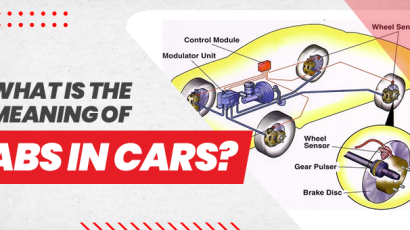
When it comes to choosing a vehicle, one of the most crucial decisions you’ll need to make is whether to opt for a 4 wheel drive car (4WD) or a 2 wheel drive car (2WD). The choice between these drivetrains can significantly impact your driving experience. It holds true, especially for challenging road conditions. In this article, we’ll provide a comprehensive comparison of 4WD and 2WD vehicles. We will examine their differences in terms of features, benefits, pricing, and performance. By the end, you’ll have a clear understanding of which drivetrain is best for your needs.
What is 4 Wheel Drive (4WD)?
4WD, or four-by-four, is a drivetrain system that simultaneously provides power to all four wheels. It is commonly found in off-road vehicles, SBT trucks, and SBT SUV. The primary purpose of 4WD is to enhance traction. Furthermore, it improves performance in challenging terrains like snow, mud, or steep inclines. By engaging all four wheels, 4WD vehicles distribute power evenly, allowing for better control and stability in adverse conditions.
What is 2 Wheel Drive (2WD)?
On the other hand, 2WD refers to a drivetrain system that powers only two wheels. Typically, the engine transfers power to the front wheels (front-wheel drive) or the rear wheels (rear-wheel drive). 2WDs are commonly found in sedans, compact cars, and smaller SUVs. While they lack the off-road capabilities of 4WD vehicles, 2WD cars excel in terms of fuel efficiency, handling, and affordability.
Features and Benefits
Features of 4 Wheel Drive (4WD) Vehicles
Off-Road Performance: 4WD vehicles are designed to conquer challenging terrains like rocky trails, snowy roads, or muddy surfaces. The ability to engage all four wheels simultaneously provides superior traction and climbing power.
Enhanced Safety: By distributing power to all four wheels, 4WD vehicles offer improved stability and control, particularly on slippery or uneven surfaces. This feature is especially advantageous in regions with frequent inclement weather conditions.
Towing and Hauling Capability: 4WD vehicles generally have a higher towing and hauling capacity. It makes them ideal for outdoor enthusiasts, campers, and those who require heavy-duty capabilities.
Resale Value: Due to their ruggedness and off-road capabilities, 4WD vehicles tend to retain their value better over time. It makes them a wise investment for those who plan to sell or trade their vehicle in the future.
Features of 2 Wheel Drive (2WD) Vehicles
Fuel Efficiency: 2WD vehicles are generally more fuel-efficient compared to their 4WD counterparts. Since only two wheels are powered, the engine doesn’t need to work as hard. It results in improved gas mileage and lower operating costs.
Affordability: In most cases, 2WD vehicles come with a lower price tag compared to their 4WD counterparts. If you don’t require off-road capabilities or live in an area with mild weather conditions, a 2WD car can be a cost-effective choice.
Better Handling: Due to their lighter weight and simplified drivetrain, 2WD vehicles often offer better handling and maneuverability. It makes them suitable for urban driving and commuting.
Lower Maintenance Costs: 2WD vehicles typically have simpler mechanical systems, leading to lower maintenance and repair costs over time. Additionally, the reduced complexity may result in longer-lasting components.
Performance Comparison
Off-Road Capabilities
4WD vehicles shine in off-road environments thanks to their superior traction and power distribution across all four wheels. They can tackle steep slopes, uneven terrain, and challenging weather conditions with ease. The additional torque and control provided by 4WD make it the go-to choice for outdoor enthusiasts, adventurers, and those who frequently encounter demanding off-road situations.
In contrast, 2WD vehicles are not specifically designed for off-road excursions. While some of these cars may feature limited slip differentials or advanced stability control systems, they generally lack the robustness and ground clearance required for challenging off-road adventures. However, for urban and suburban driving, 2WD vehicles offer excellent handling and maneuverability.
Fuel Efficiency
In terms of fuel efficiency, 2WD vehicles have the upper hand. Since only two wheels are powered, the engine doesn’t need to work as hard, resulting in better gas mileage. This advantage can translate into long-term savings, especially for daily commuters and those who primarily drive on well-maintained roads.
4WD vehicles, on the other hand, tend to consume more fuel due to the additional weight and mechanical complexity required to power all four wheels. However, advancements in technology have led to improved fuel efficiency in some modern 4WD models, narrowing the gap between the two drivetrain options.
Handling and Maneuverability
When it comes to handling and maneuverability, 2WD vehicles often outperform their 4WD counterparts. The lighter weight, simplified drivetrain, and optimized suspension systems of 2WD cars provide better agility, making them more suitable for city driving and navigating tight spaces.
4WD vehicles, while capable off-road, can feel bulkier and less nimble on paved roads. The additional weight and mechanical components associated with 4WD can impact handling and maneuverability, especially at higher speeds or during quick lane changes.
Pricing and Affordability
In terms of pricing, 2WD vehicles are generally more affordable than their 4WD counterparts. The simplicity of their drivetrain systems and reduced manufacturing costs contribute to their lower price tags. If you live in an area with mild weather conditions and don’t require off-road capabilities, a 2WD car can provide a budget-friendly option without compromising on essential features and comfort.
On the other hand, 4WD vehicles often come with a higher price due to their enhanced off-road capabilities, specialized engineering, and robust construction. The added expenses are a trade-off for the traction, control, and versatility that 4WD provides, making it a worthwhile investment for those who frequently venture off the beaten path.
Making the Right Choice
When making a decision between 4WD and 2WD, it’s crucial to evaluate your specific needs, driving conditions, and budget constraints. Here are some key takeaways to help you make an informed choice:
Assess your driving requirements: Consider the road conditions you encounter most frequently and determine if the additional traction and capabilities of a 4WD vehicle are necessary for your driving needs.
Evaluate your budget: Take into account the initial purchase price, ongoing maintenance costs, and potential fuel expenses associated with each drivetrain option.
Consider your lifestyle: If you regularly engage in off-road activities or live in an area with challenging terrains, a 4WD vehicle can provide the necessary confidence and capability. However, if your driving mainly consists of city commuting and highway trips, a 2WD vehicle may offer better fuel efficiency and handling.
Test drive different models: Visit local dealerships and test drive both 4WD and 2WD vehicles to experience the differences firsthand. Pay attention to factors such as handling, acceleration, and overall comfort.
Conclusion
Conclusively, your personal needs and budget will decide whether a 4WD is more suitable for you or a 2WD. Since a 4WD is more stable and has the necessary traction ad towing capabilities, it is better for rough terrains and harsh weather conditions. However, a 2WD is more affordable and fuel-efficient. Hence, considering these factors, you can decide which vehicle is better for your needs and budget.
Remember to assess your driving requirements, consider the cost implications, and test-drive different models before making a final decision.











